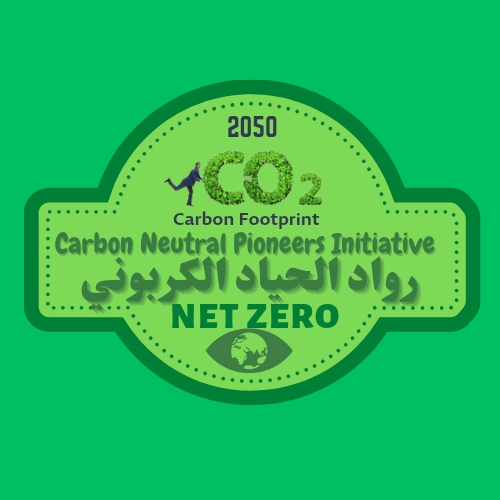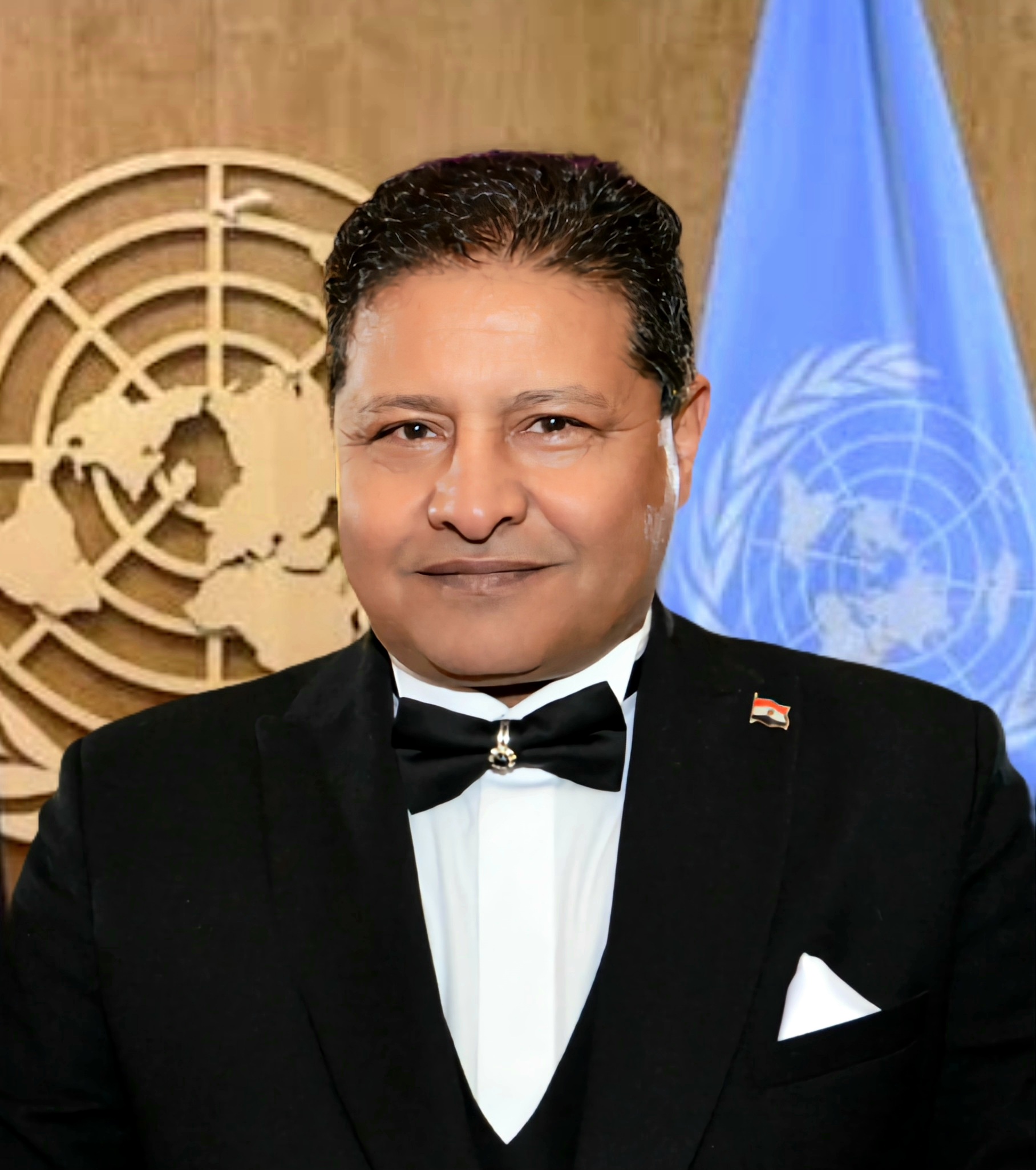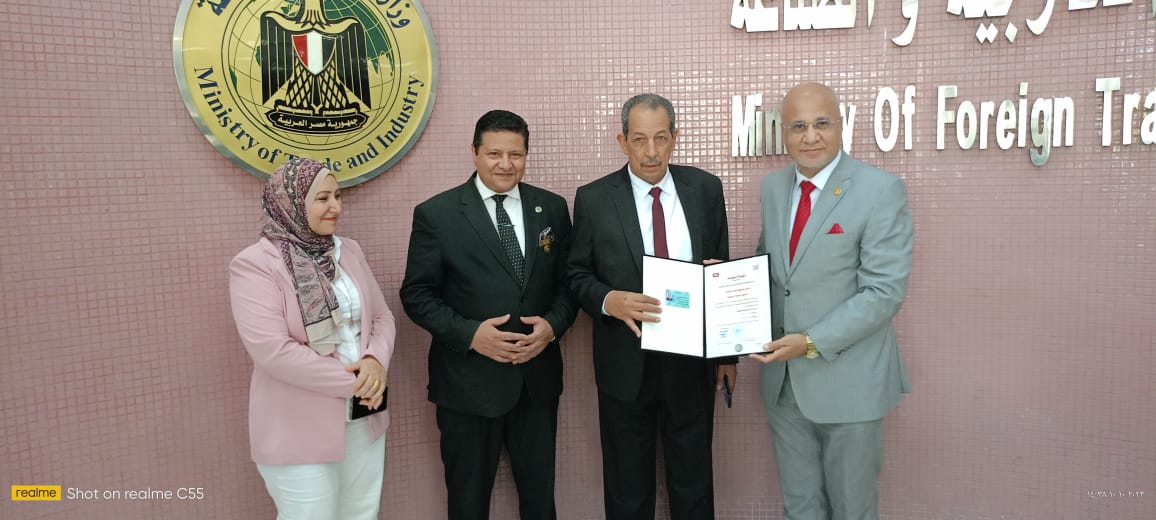Carbon Neutral Pioneers Initiative
Climate Specific Union
(
Non-governmental organization (NGO)
)
#SDGAction52558
Description
Carbon Neutral Pioneers Initiative
As regulatory and industry pressures mount, investors are increasingly asking how to manage carbon risk in their portfolios. Our Carbon Risk Assessments assess a company's carbon risks, driven by the transition to a low-carbon economy. The Carbon Offering contains risk and impact data to enable institutional investors to make informed investment decisions in relation to climate change.
Our solutions :
Carbon risk assessments
Our Carbon Risk Assessments assess a company's carbon risks, driven by the transition to a low-carbon economy. The ratings are determined by assessing a company's material exposure to and management of carbon issues.
Carbon footprint report :
For companies, organizations, products and projects
Using the Greenhouse Gas Protocol methodology, the Arab world's largest team of experts, academics and consultants works together to inventory Scope 1, Scope 2 and Scope 3 greenhouse gases and provide a report that complies with the European ESRS E1 disclosure requirements and is compatible with the EU Carbon Border Adjustment Mechanism (CBAM) and disclosure reports. Global climate risk assessment in accordance with IFRS-S2 to meet the needs of exporters
Share carbon solutions
Carbon Neutral Pioneers Initiative examines company involvement in carbon solutions, including renewable energy and low carbon alternatives, such as green transportation, green real estate and energy efficiency
Fossil Fuel Involvement
We assess different types of company involvement in fossil fuels, including thermal coal, oil and gas, oil sands, shale energy, deep water production and Arctic offshore exploration.
Stranded Carbon Assets Research
We evaluate the risk of oil and gas assets becoming non-commercial due to the transition to a low carbon economy. Exposure includes life-cycle carbon intensity of production and proven reserves as well as involvement in high-cost projects.
Engagement Services
Our Engagement Service offering also includes thematic engagements on climate change and voting recommendations on ESG and climate-related topics.
Key Benefits
Breadth and Scope
Coverage includes reported and estimated data on Scope 1, 2 and 3 emissions for GHG PROTOCOL , from shale energy to thermal coal
Develop New Investment Solutions
Low Carbon Transition Ratings
Align your portfolio to a net-zero pathway
Mandatory climate-related financial disclosure is becoming a universal reality, with more governments around the world adopting the recommendations and after its approval through IOSCO and recognition by G20, G7 and FSB of the ISSB Standards Disclosures (IFRS-S1,and IFRS-S2) and other leading expert groups. In parallel, companies are setting targets and developing strategies to do their part in meeting the global objective of minimizing global warming to 1.5°C by 2050.
https://www.facebook.com/Humanitarian.Volunteer.Team?mibextid=9R9pXO
The head of the initiative and the owner of the intellectual property rights for this global initiative, Ambassador Mostafa Elsayed Sherbiny Elsayed, is an international expert in sustainability and climate risk assessment.
This initiative provides services and aims to achieve the goals of the Paris Agreement with the aim of serving the community and is not for profit
An elite group of Egyptian experts and scientists participated in launching the Carbon Neutrality Pioneers Initiative, headed by Ambassador Mostafa Sherbiny, international expert in sustainability and climate risk assessment and head of the Scientific Chair for Carbon Footprint and Sustainability at ALECSO - League of Arab States, who was awarded by the European Commission as European Climate Pact Ambassador in Egypt in February 2022. He also issued a guide to carbon neutrality, which consists of two parts.
Given the requirements of ISSB, investors will have access to a much broader spectrum of information about a company and its climate related risks and opportunities that will help them to understand and adjust to uncertainty related to climate change. Specifically, ISSB requires companies to explain the resilience of their strategy and business model to both physical and transition risks and opportunities. To achieve this, ISSB mandates that companies conduct climate-related scenario analysis to evaluate their climate resilience. This analysis should use a suitable method, appropriate for their circumstances considering their exposure to climate-related risks and opportunities, as well as the skills, capabilities and resources that are available at the time of reporting. Companies will have to determine their approach to climate-related scenario analysis based on all reasonable and supportable information that is available without undue cost or effort and take into account both the choice of inputs and the analytical decisions made when conducting the analysis
Carbon Neutrality Leaders Initiative Low Carbon Transition Ratings
Our comprehensive framework measures how different a company's projected greenhouse gas emissions are from its net zero path between now and 2050. Measures an issuer's exposure to projected emissions
The high-level disclosure requirements set by the ISSB are:
Governance: What policies and plans has the organization put in place to address climate-related risks proactively and reactively?
Strategy: How does the organization address climate-related risks and opportunities in its future business plans? Companies must report how they expect material and transitional risks to impact operations, cash flow, business model, etc. In the short, medium and long term. Other considerations include the impact of change on the business value chain, financial planning, and organizational resilience.
Climate-related risk management, assessment and management? Companies will need to define their operations and disclose how these risks and opportunities are taken into account in the overall management process.
Metrics and targets: How does the organization measure, monitor and manage climate-related risks and opportunities over time by GHG PROTOCOL? It should include details on Scope 1, 2 and 3 greenhouse gas emissions, as well as information on the internal carbon price. The
ISSB's climate disclosures standard, IFRS-S2, will benefit the entire investment ecosystem, from issuers, to investors
Building the capabilities of companies to remove carbon by providing them with consultations to reduce the carbon footprint through sustainable practices in renewable energy and the efficiency of water, fuel and chemicals consumption in agriculture. The use of organic alternatives and the use of equipment that consumes low energy. Training company officials to reduce the carbon footprint by raising the level of awareness.
Carbon Footprint
IFRS-S1 and IFRS-S2 Standards
ESRS Standards
Carbon Border Adjustment Mechanism ( CBAM)
To support investors and issuers in meeting their new reporting obligations, the Carbon Neutrality Pioneers Initiative offers a range of climate solutions. Contact us to discuss how we can help you assess your climate resilience and transition needs.
Analyze low carbon transition exposure and management readiness across the business value chain for each emissions range.
Analysis of expected emissions from exporters against the desired 1.5°C policy scenario*
Our low carbon transition assessments are based on bottom-up scenario analysis, assessing companies' emissions trajectories against projected regional policies and technology trajectories required to meet the Paris Agreement and net-zero ambitions by 2050. Additional scenarios are available for further analysis. development.
*The 1.5°C Required Policy Scenario (RPS) is taken from the Imperative Policy Response (IPR) commissioned by the UN PRI Foundation.
Investor Support (IFRS-S1 and IFRS-S2 - CSRD for ESRS - TNFD) Reporting and Evaluation of Issuer Disclosure
Combined with our solutions for physical climate risk metrics and carbon emissions data, our low carbon transition ratings enable investors to meet most IFRS-S1 and IFRS-S2 recommendations. In addition, investors receive a detailed assessment of IFRS-S1 and IFRS-S2 disclosure in relation to the quality of their management across each IFRS-S1 subject area. And the International Financial Reporting Standard (IFRS-S2).
The expected impact is to achieve carbon neutrality by 2050 and net greenhouse gas emissions by 2060-2070 to keep global warming to within 1.5 percent, noting that a proper understanding of the potential contributions of natural and technological CO2 removal would support the call. Bringing about a radical shift in production and consumption patterns. Accelerating the achievement of sustainable development goals.
Scientific Chair for Carbon Footprint and Sustainability at ALECSO, League of Arab States
National Institute of Quality
Sustainable Development Newspaper International Union of Sustainable Development Experts UK
Volunteer Team Foundation for Humanitarian Work
Egyptian Foundation for Health and Sustainable Development
Chartered accountant Mustafa El-Sherbiny for sustainability and climate risk assessment
International Center for Sustainability and Carbon Footprint
Center for Sustainability and Greenhouse Gas Emissions Solutions
Green Future website
International Consortium of Stakeholders and Sustainable Development Organizations (CIC) UK
SDGS & Targets
Goal 6
Ensure availability and sustainable management of water and sanitation for all
6.1
By 2030, achieve universal and equitable access to safe and affordable drinking water for all
6.1.1
Proportion of population using safely managed drinking water services
6.2
By 2030, achieve access to adequate and equitable sanitation and hygiene for all and end open defecation, paying special attention to the needs of women and girls and those in vulnerable situations
6.2.1
Proportion of population using (a) safely managed sanitation services and (b) a hand-washing facility with soap and water
6.3
By 2030, improve water quality by reducing pollution, eliminating dumping and minimizing release of hazardous chemicals and materials, halving the proportion of untreated wastewater and substantially increasing recycling and safe reuse globally
6.3.1
Proportion of domestic and industrial wastewater flows safely treated
6.3.2
Proportion of bodies of water with good ambient water quality
6.4
6.4.1
Change in water-use efficiency over time
6.4.2
Level of water stress: freshwater withdrawal as a proportion of available freshwater resources
6.5
By 2030, implement integrated water resources management at all levels, including through transboundary cooperation as appropriate
6.5.1
Degree of integrated water resources management
6.5.2
Proportion of transboundary basin area with an operational arrangement for water cooperation
6.6
6.6.1
Change in the extent of water-related ecosystems over time
6.a
6.a.1
Amount of water- and sanitation-related official development assistance that is part of a government-coordinated spending plan
6.b
Support and strengthen the participation of local communities in improving water and sanitation management
6.b.1
Proportion of local administrative units with established and operational policies and procedures for participation of local communities in water and sanitation management
Goal 7
Ensure access to affordable, reliable, sustainable and modern energy for all
7.1
By 2030, ensure universal access to affordable, reliable and modern energy services
7.1.1
Proportion of population with access to electricity
7.1.2
Proportion of population with primary reliance on clean fuels and technology
7.2
7.2.1
Renewable energy share in the total final energy consumption
7.3
7.3.1
Energy intensity measured in terms of primary energy and GDP
7.a
7.a.1
International financial flows to developing countries in support of clean energy research and development and renewable energy production, including in hybrid systems
7.b
By 2030, expand infrastructure and upgrade technology for supplying modern and sustainable energy services for all in developing countries, in particular least developed countries, small island developing States, and land-locked developing countries, in accordance with their respective programmes of support
7.b.1
Installed renewable energy-generating capacity in developing and developed countries (in watts per capita)
Goal 9
Build resilient infrastructure, promote inclusive and sustainable industrialization and foster innovation
9.1
9.1.1
Proportion of the rural population who live within 2 km of an all-season road
9.1.2
Passenger and freight volumes, by mode of transport
9.2
Promote inclusive and sustainable industrialization and, by 2030, significantly raise industry’s share of employment and gross domestic product, in line with national circumstances, and double its share in least developed countries
9.2.1
Manufacturing value added as a proportion of GDP and per capita
9.2.2
Manufacturing employment as a proportion of total employment
9.3
9.3.1
Proportion of small-scale industries in total industry value added
9.3.2
Proportion of small-scale industries with a loan or line of credit
9.4
By 2030, upgrade infrastructure and retrofit industries to make them sustainable, with increased resource-use efficiency and greater adoption of clean and environmentally sound technologies and industrial processes, with all countries taking action in accordance with their respective capabilities
9.4.1
CO2 emission per unit of value added
9.5
9.5.1
Research and development expenditure as a proportion of GDP
9.5.2
Researchers (in full-time equivalent) per million inhabitants
9.a
9.a.1
Total official international support (official development assistance plus other official flows) to infrastructure
9.b
9.b.1
Proportion of medium and high-tech industry value added in total value added
9.c
Significantly increase access to information and communications technology and strive to provide universal and affordable access to the Internet in least developed countries by 2020
9.c.1
Proportion of population covered by a mobile network, by technology
Goal 13
Take urgent action to combat climate change and its impacts
13.1
Strengthen resilience and adaptive capacity to climate-related hazards and natural disasters in all countries
13.1.1
Number of deaths, missing persons and directly affected persons attributed to disasters per 100,000 population
13.1.2
Number of countries that adopt and implement national disaster risk reduction strategies in line with the Sendai Framework for Disaster Risk Reduction 2015–2030
13.1.3
Proportion of local governments that adopt and implement local disaster risk reduction strategies in line with national disaster risk reduction strategies
13.2
Integrate climate change measures into national policies, strategies and planning
13.2.1
Number of countries with nationally determined contributions, long-term strategies, national adaptation plans and adaptation communications, as reported to the secretariat of the United Nations Framework Convention on Climate Change
13.2.2
Total greenhouse gas emissions per year
13.3
Improve education, awareness-raising and human and institutional capacity on climate change mitigation, adaptation, impact reduction and early warning
13.3.1
Extent to which (i) global citizenship education and (ii) education for sustainable development are mainstreamed in (a) national education policies; (b) curricula; (c) teacher education; and (d) student assessment
13.a
Implement the commitment undertaken by developed-country parties to the United Nations Framework Convention on Climate Change to a goal of mobilizing jointly $100 billion annually by 2020 from all sources to address the needs of developing countries in the context of meaningful mitigation actions and transparency on implementation and fully operationalize the Green Climate Fund through its capitalization as soon as possible
13.a.1
Amounts provided and mobilized in United States dollars per year in relation to the continued existing collective mobilization goal of the $100 billion commitment through to 2025
13.b
Promote mechanisms for raising capacity for effective climate change-related planning and management in least developed countries and small island developing States, including focusing on women, youth and local and marginalized communities
13.b.1
Number of least developed countries and small island developing States with nationally determined contributions, long-term strategies, national adaptation plans and adaptation communications, as reported to the secretariat of the United Nations Framework Convention on Climate Change
Goal 14
Conserve and sustainably use the oceans, seas and marine resources for sustainable development
14.1
By 2025, prevent and significantly reduce marine pollution of all kinds, in particular from land-based activities, including marine debris and nutrient pollution
14.1.1
(a) Index of coastal eutrophication; and (b) plastic debris density
14.2
By 2020, sustainably manage and protect marine and coastal ecosystems to avoid significant adverse impacts, including by strengthening their resilience, and take action for their restoration in order to achieve healthy and productive oceans
14.2.1
Number of countries using ecosystem-based approaches to managing marine areas
14.3
Minimize and address the impacts of ocean acidification, including through enhanced scientific cooperation at all levels
14.3.1
14.4
By 2020, effectively regulate harvesting and end overfishing, illegal, unreported and unregulated fishing and destructive fishing practices and implement science-based management plans, in order to restore fish stocks in the shortest time feasible, at least to levels that can produce maximum sustainable yield as determined by their biological characteristics
14.4.1
14.5
By 2020, conserve at least 10 per cent of coastal and marine areas, consistent with national and international law and based on the best available scientific information
14.5.1
14.6
By 2020, prohibit certain forms of fisheries subsidies which contribute to overcapacity and overfishing, eliminate subsidies that contribute to illegal, unreported and unregulated fishing and refrain from introducing new such subsidies, recognizing that appropriate and effective special and differential treatment for developing and least developed countries should be an integral part of the World Trade Organization fisheries subsidies negotiation
14.6.1
Degree of implementation of international instruments aiming to combat illegal, unreported and unregulated fishing
14.7
By 2030, increase the economic benefits to Small Island developing States and least developed countries from the sustainable use of marine resources, including through sustainable management of fisheries, aquaculture and tourism
14.7.1
Sustainable fisheries as a proportion of GDP in small island developing States, least developed countries and all countries
14.a
Increase scientific knowledge, develop research capacity and transfer marine technology, taking into account the Intergovernmental Oceanographic Commission Criteria and Guidelines on the Transfer of Marine Technology, in order to improve ocean health and to enhance the contribution of marine biodiversity to the development of developing countries, in particular small island developing States and least developed countries
14.a.1
14.b
Provide access for small-scale artisanal fishers to marine resources and markets
14.b.1
Degree of application of a legal/regulatory/policy/institutional framework which recognizes and protects access rights for small‐scale fisheries
14.c
Enhance the conservation and sustainable use of oceans and their resources by implementing international law as reflected in United Nations Convention on the Law of the Sea, which provides the legal framework for the conservation and sustainable use of oceans and their resources, as recalled in paragraph 158 of "The future we want"
14.c.1
Number of countries making progress in ratifying, accepting and implementing through legal, policy and institutional frameworks, ocean-related instruments that implement international law, as reflected in the United Nations Convention on the Law of the Sea, for the conservation and sustainable use of the oceans and their resources
SDG 14 targets covered
| Name | Description |
|---|---|
| 14.1 | By 2025, prevent and significantly reduce marine pollution of all kinds, in particular from land-based activities, including marine debris and nutrient pollution |
| 14.2 | By 2020, sustainably manage and protect marine and coastal ecosystems to avoid significant adverse impacts, including by strengthening their resilience, and take action for their restoration in order to achieve healthy and productive oceans |
| 14.3 | Minimize and address the impacts of ocean acidification, including through enhanced scientific cooperation at all levels |
| 14.4 | By 2020, effectively regulate harvesting and end overfishing, illegal, unreported and unregulated fishing and destructive fishing practices and implement science-based management plans, in order to restore fish stocks in the shortest time feasible, at least to levels that can produce maximum sustainable yield as determined by their biological characteristics |
| 14.5 | By 2020, conserve at least 10 per cent of coastal and marine areas, consistent with national and international law and based on the best available scientific information |
| 14.6 | By 2020, prohibit certain forms of fisheries subsidies which contribute to overcapacity and overfishing, eliminate subsidies that contribute to illegal, unreported and unregulated fishing and refrain from introducing new such subsidies, recognizing that appropriate and effective special and differential treatment for developing and least developed countries should be an integral part of the World Trade Organization fisheries subsidies negotiation |
| 14.7 | By 2030, increase the economic benefits to Small Island developing States and least developed countries from the sustainable use of marine resources, including through sustainable management of fisheries, aquaculture and tourism |
| 14.a | Increase scientific knowledge, develop research capacity and transfer marine technology, taking into account the Intergovernmental Oceanographic Commission Criteria and Guidelines on the Transfer of Marine Technology, in order to improve ocean health and to enhance the contribution of marine biodiversity to the development of developing countries, in particular small island developing States and least developed countries |
| 14.b | Provide access for small-scale artisanal fishers to marine resources and markets |
| 14.c | Enhance the conservation and sustainable use of oceans and their resources by implementing international law as reflected in United Nations Convention on the Law of the Sea, which provides the legal framework for the conservation and sustainable use of oceans and their resources, as recalled in paragraph 158 of "The future we want" |
Deliverables & Timeline
Comprehensive metric for low carbon transition alignment
Analyze low carbon transition exposure and management readiness across the business value chain for each emissions range. Our assessment provides more than just an implicit assessment of temperature rise. It goes beyond looking at the company's ambitions and goals. Investors can identify areas where each issuer is performing well and opportunities for improvement.
Carbon footprint diploma for the first institutions and companies. The first diploma was held for 96 training hours in cooperation with the National Institute of Quality, and 72 auditors and experts in green environment management were graduated.
The Carbon Neutrality Guide is the first guide in the Arabic language on the carbon footprint and carbon markets. Part One: The Carbon Footprint Guide, written by Ambassador Mostafa Sherbiny and Dr. / Hanem Al-Sheikh Part Two: A guide to carbon markets and the path to...
Launching a training program for students at the University of Misr in 6th of October to form a team of climate ambassadors and another team of water ambassadors in cooperation with the Faculty of Mass Communication.
Resources mobilized
Partnership Progress




Feedback

Timeline
Entity
Geographical coverage
Other beneficiaries
Organizations and companies in all sectors, specialized centers, universities, the financial market, exporters and investors
Organizational chart :
Supreme Council of Consultants:
Dr.. Magdy Allam, Chairman of the Supreme Advisory Board
Under the supervision of Professor Dr. Muhammad Etman, President of the National Quality Institute
Board of Trustees:
Founder and President of the International Climate Change Expert Initiative:
Ambassador Mustafa El-Sayed El-Sherbiny
Vice Chairman of the Board of Trustees: Dr. Mohamed Abdel Fattah Mustafa, Board of Directors of the Arab Union for Education and Scientific Research
Members of the Board of Trustees:
Professor Dr. Gamal Shaaban, former head of the National Heart Institute
Professor Dr. Amr Hassan, former Secretary-General of the National Population Council
Dr.. Amr Haras, Executive Director of the Egyptian Society for Health and Sustainable Development
Dr. Hossam Al-Imam, President of the Egyptian Society for Human Rights
Ms. Hanem Al-Sheikh, Agricultural Research Center
Actress and professor Dr. Jihan El-Bayoumi is professor and head of the Geography Department at Helwan University
Professor Dr. Khaled Al-Qadi, Dean of the Faculty of Home Economics, Helwan University
Professor Dr. Manal Khairy, Professor of Economics at Helwan University
Professor Dr. Randa Rizk, Professor of Social Media at Cairo University
Professor Dr. Amira Darwish is Assistant Professor of Nutrition at Burj Al Arab University
Professor Dr. Dalia Younis, Deputy Dean of the College of International Transport and Logistics Services
Assistant Professor Dr. Rania Fouad, Faculty of Engineering, Helwan University
Dr.. Amal El-Sunbaty, Assistant Professor of Environmental Engineering - Egypt-Japanese University of Science and Technology
Organizing Committee:
M. Adel Tawfiq
Dr. Rami Adel
Dr. Hani Nabil
Dr. Marwa Ahmed Kani
General coordinators:
Mr. Mahmoud Al-Dabaa
Dr. Shaima Zuhair and
Photos



More information
Countries
















Headquarters
Contact Information
Ambassador / Mostafa Sherbiny , International expert on sustainability and climate risk assessment
